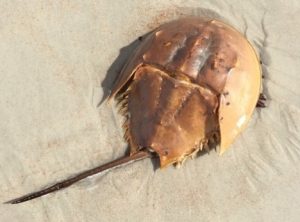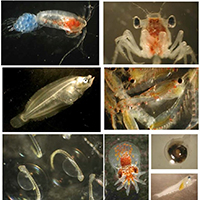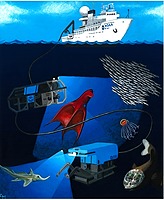Plant and Animal Habitats
This program is a collaboration between the Cape Cod Regional STEM Network and Woods Hole Sea Grant.
Summary
In this 2nd grade unit, the students will explore the habitats of plants and animals. A habitat is a place where an animal or plant lives that meets its need to survive. Students will learn that animals must have oxygen, food/water, and shelter. Students will learn that plants need carbon dioxide, sun, water, and food (minerals). Students will also observe adaptations that allow animals and plants to avoid predators. Finally, the students will learn how plants and animals rely on each other to survive and reproduce.
NOAA Live! Webinars Highlighted: Leaping for Atlantic Salmon, Swimming Upstream with River Herring, Winged Ambassadors: Ocean Travelers, The Life of Hawaiian Bonefishes, The Amazing Story of the Horseshoe Crab, and The Wonderful World of Plankton: the Tiny Animals of the Sea
Lesson Plan
Plant and Animal Habitats Lesson Plan
Activity Sheets/Handouts
Marine Animals I Have Seen Worksheet
This lesson meets the following Standards:
- NGSS:
-
- 2-LS2-2 - Develop a single model that mimics the function of an animal in dispersing seeds or pollinating plants.
- 2-LS4-1 - Make observations of plants and animals to compare the diversity of life in different habitats.
- MA STE:
-
- 2-LS2-3(MA) - Develop and use models to compare how plants and animals depend on their surroundings and other living things to meet their needs in the places they live.
Clarification Statements:
Animals need food, water, air, shelter, and favorable temperature; plants need sufficient light, water, minerals, favorable temperature, and animals or other mechanisms to disperse seeds.
- 2-LS2-3(MA) - Develop and use models to compare how plants and animals depend on their surroundings and other living things to meet their needs in the places they live.
- Ocean Literacy Principles:
-
- Principle 5 - The ocean supports a great diversity of life and ecosystems.
d. Ocean biology provides many unique examples of life cycles, adaptations, and important relationships among organisms (symbiosis, predator-prey dynamics, and energy transfer) that do not occur on land.
e. The ocean provides a vast living space with diverse and unique ecosystems from the surface through the water column and down to, and below, the seafloor. Most of the living space on Earth is in the ocean.
List of Unit Resources
Lesson 1:
Lesson 2:
- NOAA Live! Webinar 13: Leaping for Atlantic Salmon - 11:21-15:15
- NOAA Live! Webinar 15: Swimming Upstream with River Herring - 14:14 - 18:29
- NOAA Live! Webinar 23: Winged Ambassadors: Ocean Travelers - 10:15-16:0
- NOAA Live! Webinar 26: The Life of Hawaiian Bonefishes - 35:14-38
- NOAA Live! Webinar 29: The Amazing Story of the Horseshoe Crab - 15:37-18:50
- NOAA Live! Webinar 38: The Wonderful World of Plankton: the Tiny Animals of the Sea - 41:39-45:05
- What is a habitat Discovery Education video
Lesson 3:
Lesson 4:
- Image of seed ready to disperse: sunflower (use an internet image)
- Image of seed ready to disperse: pine cone image
- Methods of seed dispersal: gravity - maple tree helicopters and oak tree acorns
- Methods of seed dispersal: wind - dandelions and grass
- Ballistic - milkweed pods
- Water - coconuts
- Animals - squirrels
- BBC video on seeds and seed dispersal
- Seed dispersal activity: build an Exploding Seed Pod
- Seed Go Game and The Old Sock Drag
This program is a collaboration between the Cape Cod Regional STEM Network and Woods Hole Sea Grant.
Teacher in Residence
Michael Irving
3rd Grade Teacher
North Falmouth Elementary School
Michael Irving worked with the Woods Hole Sea Grant Educator at the Woods Hole Oceanographic Institution during July of 2020, developing four different lesson plans that included both in-person and remote learning lessons and activities. The lessons include information and clips from more than a dozen NOAA Live! Webinars.








